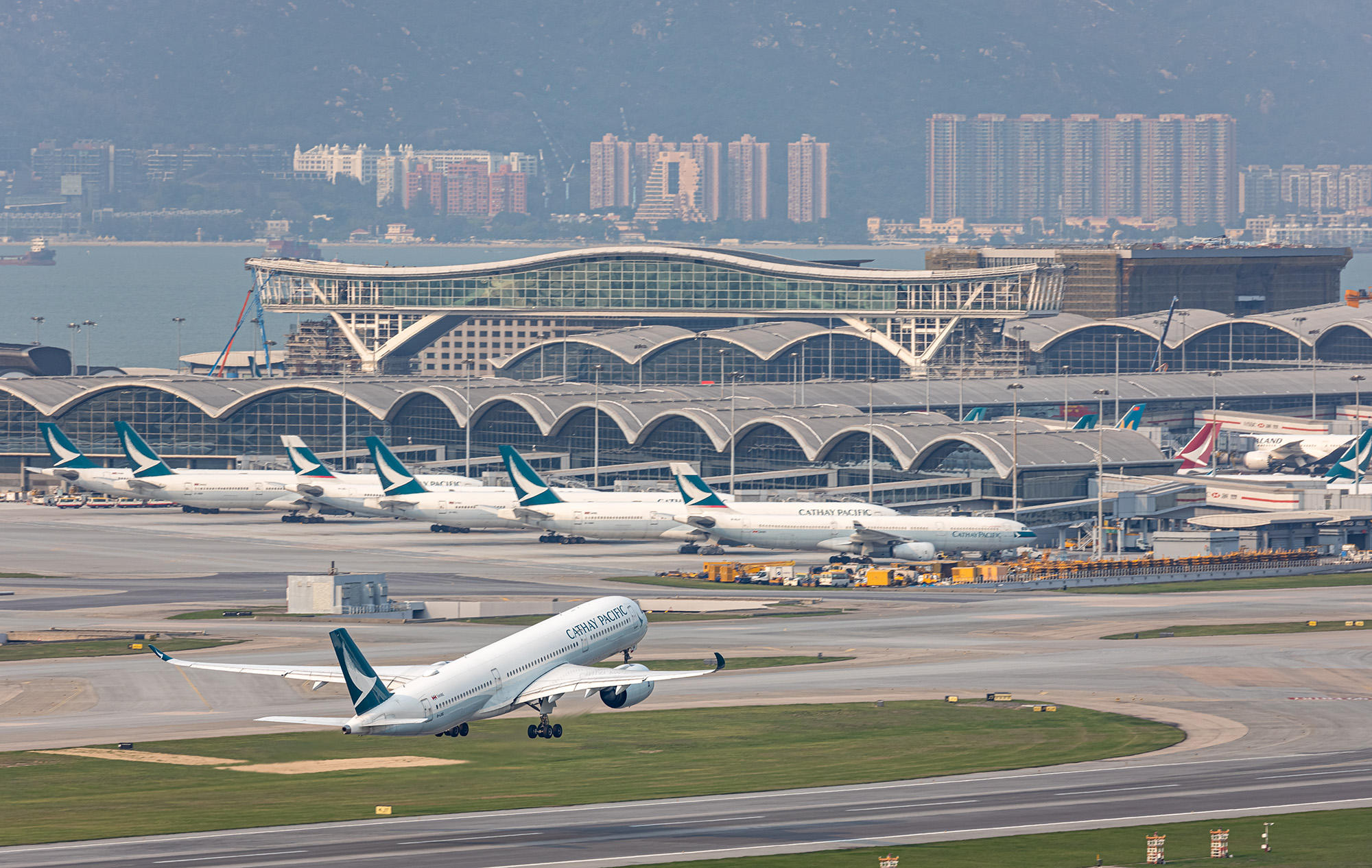Resilience. That’s the word that might be best applied to Regional Head of Cargo Rajesh Menon’s SAMEA (South Asia, Middle East and Africa) patch over the past couple of years. Even during the second wave of infection that hit India in 2021, with shortages of many vital items from PPE to ventilators and even oxygen, the air cargo market carried on, and the market, underpinned by the robust Indian economy, rebounded in double-quick time.
‘Operational integrity at Cathay Pacific Cargo was maintained throughout,’ he says. ‘We ensured that teams were coming and handling freighters.’ Across India, when entire cities were in lockdown, teams were given passes to get them through the police checkpoints and to the airport.’
COVID-19 provided something of a stimulus for the India market, which is already strong in air freight. At first this was imports of urgent supplies that were needed to help combat the pandemic. ‘Later on, it became about vaccine exports,’ says Menon. ‘India was one of the biggest suppliers of vaccines, with exports from the Serum Institute in Pune through Mumbai, and Bharat Biotech from Hyderabad.’

India rebounds
Since then, Menon’s team saw the Indian manufacturing sector return fully by the end of 2021, and by the start of 2022 economic activity had returned to normal in terms of manufacturing output and consumer consumption as a local market. ‘So it was back to a normal world, with travel between cities, and I visited most of our ports in South Asia and the Middle East,’ he says.
This was still a challenging time for Cathay. India’s biggest export market via Hong Kong is the US, but the start of 2022 coincided with the reduction in long-haul freighters because of crew quarantine requirements. ‘Export-wise, we didn’t have the long-haul to the US,’ Menon says. ‘So we did a data analytical study to see which markets we could grow.’
That led to growing the entire Asia market ‘which fitted with the regional freighters that we were running, and we saw a 15 per cent increase to the overall tonnage.’ Even as the US market becomes more accessible, Asia will now remain a core, expanded market.
India’s southern cities
Bengaluru (Bangalore), Chennai, and Hyderabad are closely located industrial hubs, all served by freighters over the past couple of years. They export pharma, electrical goods, machinery and garments, with the US as the biggest market. ‘This area has a lot of manufacturing units, so the business moves from one port to another depending on what’s available,’ says Menon. ‘It’s performed well during the pandemic: we used to have two freighters and four cargo-only passenger (COP) services at a given time in a week. But now, with passenger flights coming in and more freighter frequencies, we have daily options for customers and an overall solution, which is pretty strong in the market.’

Kathmandu and Dhaka
It may be a surprise to learn that Kathmandu had a COP service operating weekly throughout 2021 and 2022. These imported electrical goods and exported Nepalese artefacts and handicrafts, mainly bound for the US. Meanwhile Bangladesh kept its freighter service to Dhaka, backed up until March with COPs. Now these two ports are welcoming back passenger services, but with a twist. Previously Cathay Dragon ports, they will now be served by the green brushwing of Cathay Pacific. ‘Kathmandu was one of the most successful COPs we operated,’ says Menon.
The Middle East
Cathay Pacific Cargo currently serves Dubai with a scheduled service, and there has been a regular one-way charter service operating to Riyadh bringing in e-commerce in the form of electronics and garments on the whole, and coming back via Dubai with whatever it can carry.
‘Dubai is more about sea-to-air,’ says Menon. Goods from all over the world come in by ocean freight and get uplifted because of the sheer number of flights. ‘It’s not about manufacturing, it’s a trading zone where goods are consolidated and exported by air.’
Cathay Pacific Cargo’s freighter stops in Dubai on the way to Europe, enabling it to carry exotic and expensive cargoes such as supercars. ‘We carry a lot of these cars to Europe, because our freighters have a stopover in the cargo-only Dubai World Central (DWC),’ he adds. And after a gap of nine months Cathay Pacific is now operating passenger flights to Dubai International Airport, which may be a lot more convenient for local forwarders.
Passenger services to Tel Aviv have also been increased to three-times weekly, although the Israel market is managed by the Europe team.
Cargo teams during the pandemic
‘During the pandemic, I think practically everyone was infected with COVID-19, and the impact on them and their families was huge,’ says Menon. ‘On the operational side everyone carried on coming to work. We have our own internal parameters to see which teams are doing well and our region was number one in 2021, even when the entire country was closed.’
Cargo customers
India customers have rapidly adapted to digital platforms. ‘Most of our ports have an average of 90 per cent bookings via Click & Ship,’ he says. ‘Our customers are completely convinced that this is the future.’
Some of India’s unique payment models, which included in-person cash payments for cargo release, have also gone. ‘Customers don’t need to come to the office. We have a digital payment platform and it’s a very customer-centric solution – and it’s quick! In the past two years, India has become the biggest market when it comes to using digital platforms. Practically everything is bought online. That’s a huge shift, and a welcome new normal.’

Market outlooks
Sri Lanka and Bangladesh
Sri Lanka’s economy has been troubling for a while, with a lot of difficulty because of high fuel prices and instability. ‘We used to have 20-tonne flights during the toughest phase; now you can see 50 tonnes becoming normal with pick-ups for seafood and garments,’ says Menon. ‘But we still have the potential to return to our pre-pandemic levels, which is a double of the average tonnage.’
Bangladesh’s economic situation is also challenging, and it has successfully applied to the World Bank for support. ‘Imports are low because the foreign reserves are pretty tight now,’ says Menon. The country is also subject to power cuts, which means that some manufacturers may not be able to maintain their production consistently. There is also a downturn in orders from their export markets in the US and Europe as consumer confidence falls. ‘I feel it will be challenging for Bangladesh in the next six months, but we will continue to provide world-class air cargo service to where we serve,’ says Menon.
India
‘I think India is going to be one of those regions that will sustain performance because of the local import and export market,’ says Menon. ‘We foresee a drop of around five per cent, but otherwise the indicators still hold pretty strong for us and we’re pretty confident.’








